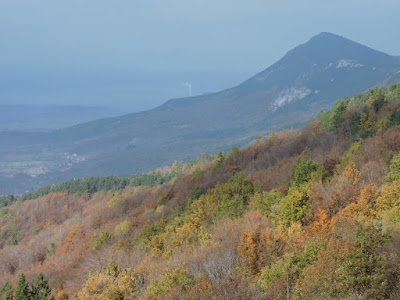 |
| Oak woodland near Trieste, 22nd November 2016. |
 |
| Wild service tree Sorbus torminalis, Trieste, 22nd November 2016. |
 |
| Gall made by Andricus caputmedusae (an oak gall wasp), Trieste, 22nd November 2016. |
 |
| Fungi sp., Trieste, 22nd November 2016. |
Despite being almost December, it is now that oak woodlands close to my home, along the Adriatic coast, are sporting their most vivid autumn colours. These thermophilous stands of sessile Quercus petraea and downy oak Q. pubescens are about a month late in terms of autumn phenology, if compared to the Dinaric forests of beech and fir (Abieti-Fagetum) that cover most of central and western Slovenia. Similarly, also woodlands on the nearby Karst plateau have already shed their leaves, mostly due to the slightly harsher climate. But on the coast is different. The warmer climate allows trees to have a longer vegetation season; moreover, oaks are well known for its late leaf-shedding. All this makes for a great spectacle of autumn colours, at a time when most other forests are already in bleak winter tones.
Speaking about trees, I suggest this new excellent book, written by Peter Wohlleben: The Hidden Life of Trees.
Speaking about trees, I suggest this new excellent book, written by Peter Wohlleben: The Hidden Life of Trees.

































